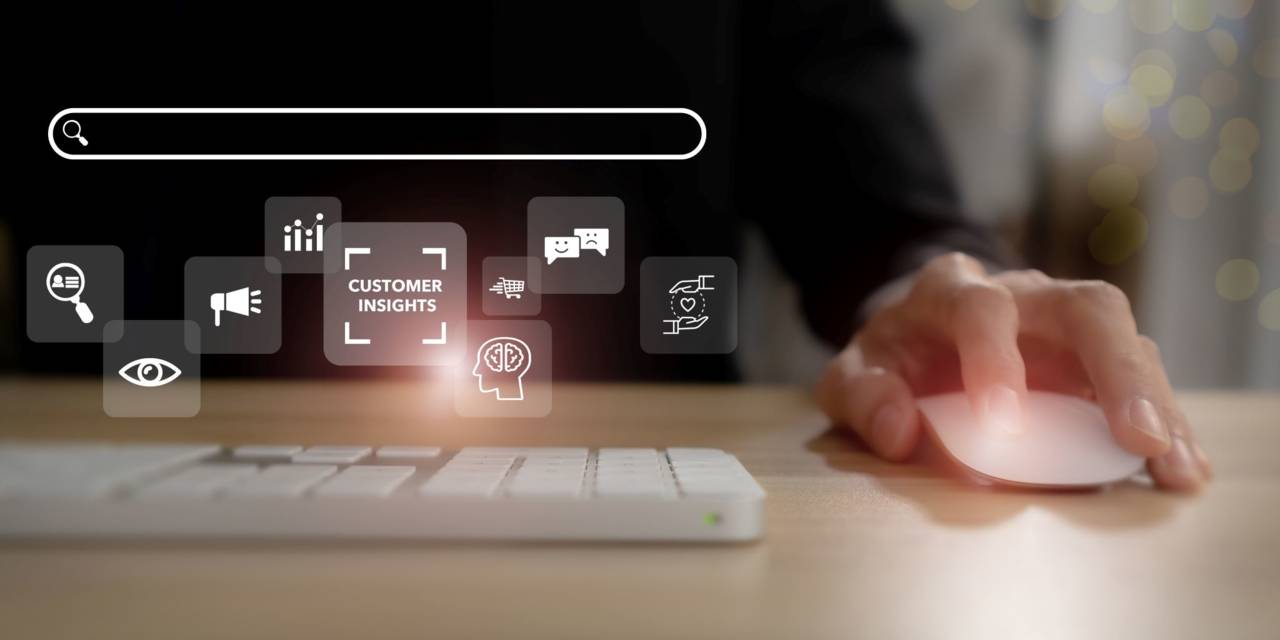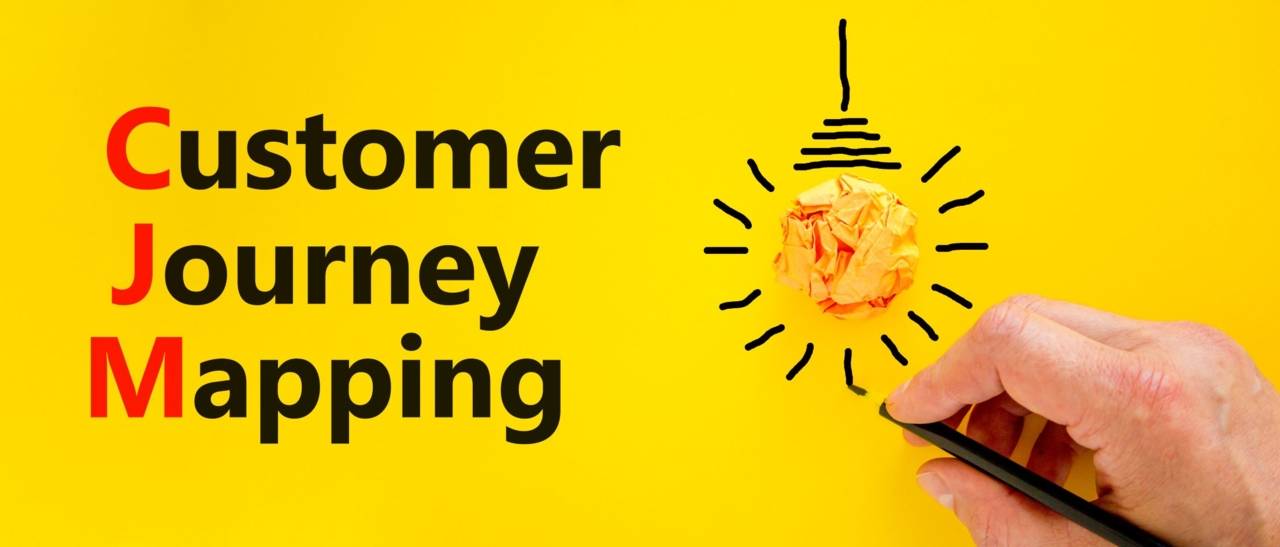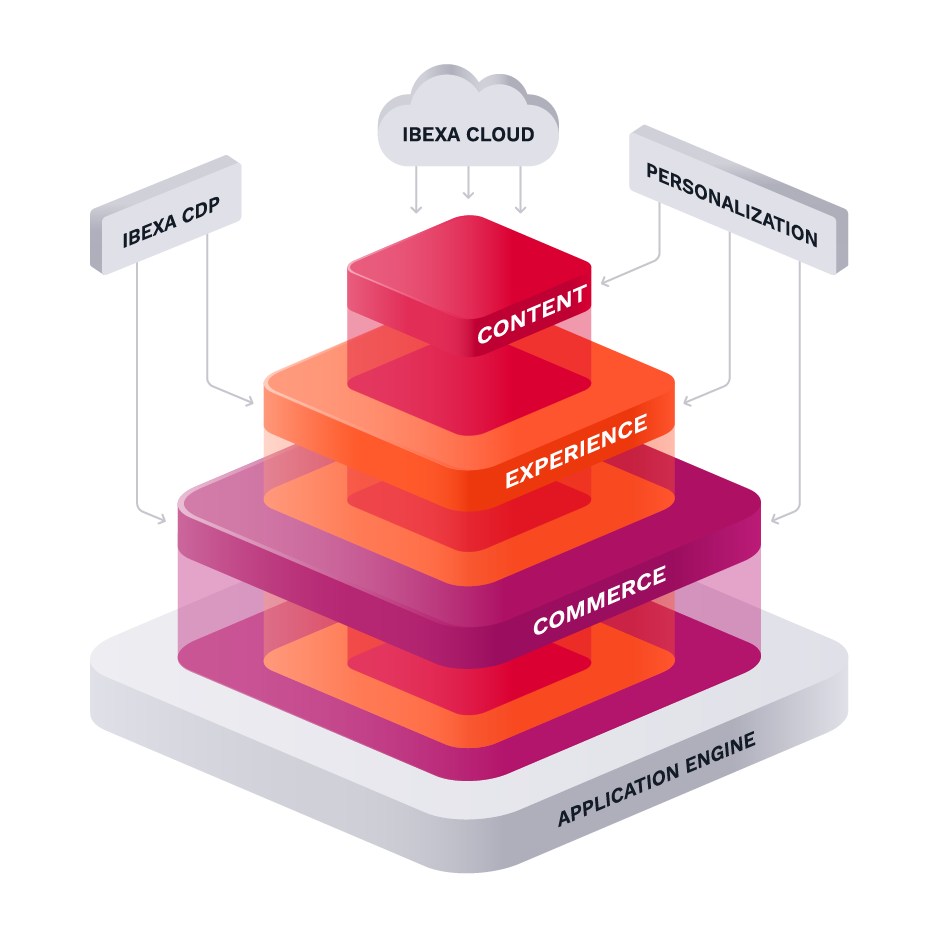How to Build a Successful CX Customer Experience Strategy

While B2B digital channels were becoming increasingly influential before the pandemic, COVID-19 accelerated this trend. Today, B2B buyers conduct the vast majority of their research via digital channels and seek more self-service opportunities. As a result, the B2B sector is placing a much greater emphasis on Customer Experience (CX) and dedicating more resources to creating comprehensive CX strategies.
In this blog post, we explain what B2B Customer Experience strategies are, how they differ from B2C strategies, and how they benefit your business. We then describe the key features of Customer Experience strategies and what factors you should consider when creating one.
What is a Customer Experience strategy?
Customer Experience strategies are long-term plans that detail how your organization will shape and optimize its digital experiences to meet your customers’ needs and achieve your business goals.
CX is how customers perceive your business based on all their interactions with your company. With this in mind, another definition of CX strategy is: a long-term, organization-wide plan explaining how you will improve the customer experience.
How B2B CX strategies differ from B2C strategies
B2B strategies differ from B2C strategies because the customer journeys are so distinct. While B2C customer journeys are relatively linear and straightforward, B2B journeys are long, complex, and feature a far greater number of interactions and stakeholders.
That said, there are similarities. Underneath everything, B2B and B2C customers want the same thing - easy, intuitive, and seamless interactions. However, easy, intuitive, and seamless mean very different things in each context. B2B and B2C strategies reflect those differences.
Why are B2B CX strategies valuable?
Ultimately, B2B CX strategies benefit your business by re-focusing your digital experiences on customer needs. We highlighted three main benefits to enrich your understanding of the advantages of a comprehensive CX strategy.
1. Customer retention
Customers appreciate digital experiences that are designed to make their work easier. It is as simple as that. CX strategies help you to retain customers and prevent them from searching for superior experiences elsewhere. This is a big deal for your business. Two statistics back this up.
First, the Harvard Business Review reported that increasing your customer retention rate by just 5% leads to at least a 25% increase in profits. In some cases, it resulted in a 95% increase in profits. Second, PWC research shows that 86% of B2B buyers are willing to pay more for a great customer experience.
2. A new perspective on all your business operations
CX strategies cover the entirety of your business operations and impact every aspect of your organization. By examining all the ways your company interacts with buyers and viewing them through a customer-centric lens, you get a whole new perspective on how they function.
3. Experiences are part of the product
In B2B, you do not just sell products and services. You sell experiences. B2B customer journeys are long and complex. Buyers do not want to spend their time working with a supplier that makes things difficult. Not only is it frustrating, but it is also inefficient. And time is money. CX strategies are essential because B2B buyers are not just investing in products. They are investing in a relationship.
Key features of a Customer Experience strategy
1. Put the customer at the center of everything
Customer-centricity is the fundamental principle underpinning all effective B2B CX strategies. In other words, the customer needs to be the first and last thing you think about when creating a customer experience strategy. Every element of your strategy must be dictated by the customer, and the customer should be the primary consideration in any decision-making.
This is more radical than it first seems. The popularity of adages like the customer is always right and the customer is king suggests that customer-centricity has always been a priority. However, most organizations only pay lip service to this idea. Applying a customer-centric approach to every aspect of your strategic planning will reveal numerous areas in which you can deliver an improved customer experience.
2. Data-driven insights at every opportunity
One of the biggest challenges associated with developing a customer experience strategy is knowing what customers want and how they behave. The simple solution is data analytics. Effective CX strategies are built on data-driven insights gathered across the entire customer journey.
As a result, you must collect, store and analyze data at every opportunity, from every customer touchpoint, and in every channel. The more data you can utilize, the more comprehensive your understanding of the customer, and the better you can meet their needs.
3. Connected channels
Modern CX depends on adopting an omnichannel approach. Omnichannel philosophy argues that B2B businesses must create digital systems that facilitate the free flow of customers, data, and employees between channels. It emphasizes the elimination of digital silos and the creation of connected channels.
Today, B2B buyers regularly use ten or more channels when engaging with a supplier (McKinsey). They expect to move between these channels seamlessly. Failure to facilitate that movement or an inability to provide a joined-up customer experience will result in the customer jumping ship and seeking out competitors who are easier to work with.
4. Intelligent automation
An increasing number of B2B buyers want access to self-serve channels. Whether that means Chatbots, Digital Sales Rooms, or Knowledge Bases depends on your customers. Understanding how and why they want to self-serve is essential to intelligent self-service implementation.
A first-rate CX strategy takes extra care when deciding when and how to implement self-serve technology. On its own, the technology does not result in superior customer experiences or more satisfied customers. The UX and how you integrate self-serve tools into the wider customer service ecosystems are what matters.
5. Consistency across all channels
Consistency across all channels is key to building your brand and delivering outstanding CX. Your customers desire familiarity and the ease of use that consistent CX guarantees. If the customer experience varies depending on the channel a customer selects, you are not permitting B2B buyers to engage with your services via their chosen channels. You are forcing them to engage with those channels that are fully optimized and avoid those that are not.
This lack of choice goes against every tenet of CX. Great omnichannel customer experiences empower customers to interact with your business in the most convenient way for them. That means providing them with real choice and ensuring that their choice does not negatively impact their quality of service. In other words, B2B customer experience strategies always prioritize consistency.
6. Personalize where possible
Personalization isn't a B2C thing. It is a human thing. Individuals in both B2B and B2C want to see personalized content and are frustrated when you direct them toward irrelevant content. They want experiences tailored to their needs, not generic sales processes that treat all buyers the same.
Part of developing a powerful CX strategy is establishing where and when personalization can positively impact your customers' digital experience. Many B2B businesses focus too much on basic personalization, such as addressing the recipient of an email by their name. But true personalization goes a lot further.
B2B personalization means delivering relevant content to segmented audiences at the moment of maximum impact. It is understanding which members of the buying team are responsible for each part of the purchasing process and facilitating their work. It is tailoring pricing and logistics to your customers’ needs.
7. Future-thinking and able to scale
By nature, strategies are long-term plans. They explain how you will achieve your long-term goals and drive the organization towards its objectives. Consequently, all good customer experience strategies are forward-thinking and encompass ideas on how you will scale the customer experience as you grow.
No B2B business can implement all its plans and ideas at once. Digital transformation takes time. Your strategy should reflect this and detail how you expect to evolve your CX efforts over time.
8. Measurement and refinement
No CX strategy is complete without a section explaining how you will measure performance and determine success. At a fundamental level, this involves determining what success looks like for your business. Is it greater customer satisfaction? Improved sales? Improved customer retention? Or improved customer acquisition? In all likelihood, it will be a combination of these elements.
From a more detailed-oriented perspective, you must consider which metrics you use to measure progress and performance. What measurements give you the deepest and most accurate insight into whether your CX strategy is working? This will differ from business to business, so take time to assess your company's aims and what metrics complement those goals.
9. Simplicity is key
Finally, it is essential to note that simplicity is one of the critical features of a successful CX strategy. By that, we don't mean to say that your strategy or digital systems should be simple. Your CX strategy should ensure the customer journey is simple. You are looking to ease the customer through their many interactions with your organization, ensuring they are always aware of how to progress and ensuring that there are no obstacles in their way.
When the customer experience is overly complex, customers grow frustrated. This is a serious challenge for B2B companies, as the B2B customer journey is increasingly complicated. Unlike B2C, the B2B customer journey is not linear. It is not one straight line down the sales funnel. You have to be prepared for customers who have complex needs. Your CX strategy must accommodate those complex needs.
How to build a CX strategy
Having described the key features of a well-considered CX strategy, let’s examine how you can create your own.
1. Assess your current strategy
The first step in the process is to assess your current CX strategy. You may not call it a CX strategy. It may not even be a coherent strategy. Instead, you may have to look at a wide range of plans, all of which influence how you shape the customer experience. However, by the end of this process, you will have a unified and holistic strategy that all parts of your business can draw on when making decisions.
Think about what works in your current customer experience strategy. Where is it succeeding? Where is it failing your customers? Is it linked up and consistent? Or are there contradictions? How does your current strategy match up with your ideas for your new CX strategy? Understanding how you meet customer needs currently enables you to highlight areas where there is room for improvement.
2. Know your customers
You cannot design an effective digital customer experience without first knowing what your customers want and how they behave. This goes back to our point about customer-centricity. You must design every aspect of the customer journey to facilitate the purchasing process.
Some B2B organizations already leverage the vast amounts of customer data they have at their disposal. Many do not. Technology like Ibexa DXP helps you collect customer data and utilize it to create world-class digital experiences that put the customer first. Harvest as much valuable data as possible and use it to create digital systems that suit your customers.
3. Identify your touchpoints
As well as understanding your customers, you need to know your own channels and touchpoints inside out. How do customers interact with each touchpoint? Why and when do they choose particular channels? Are channels more relevant to certain parts of the customer journey? How does that affect the way you optimize those channels?
Your customer service channels are not do-it-all solutions. They are suited to certain situations. For instance, Chatbots are excellent at automating high-volume, repeat inquiries and providing self-service opportunities. They are not well suited to interactions that require a sophisticated response, emotional nuance, or out-of-the-box thinking. Piecing together the jigsaw puzzle that is your customer service ecosystem and understanding what fits where in the customer journey is vital to creating a high-quality customer experience strategy.
4. Map the customer journey
You have gotten to know your customers. You have identified your touchpoints. Now, it is time to map the customer journey. For B2B companies, this can be difficult. The complexity of the B2B customer journey means that buyers tend to move in unpredictable ways. However, you can generalize. This is where customer personas are extremely valuable.
Yes, B2B buyers may not march down the sales funnel like their well-behaved B2C equivalents. But they behave logically, which manifests itself in identifiable patterns. You can transform these patterns into frameworks. Consider the popular five-stage theory. It argues that there are five key stages to the B2B customer journey:
- Awarenes
- Consideration
- Conversion
- Loyalty
- Advocacy
These stages can help you target your CX strategy and simplify the customer journey. Within those stages, customers will use a wide range of touchpoints. Make sure you understand which are the most common, how customers move between them, and what their strengths and weaknesses are.
5. Consider omnichannel practices
Finally, all customer experience strategies should be developed with omnichannel ideas in mind. If we were to reduce the omnichannel approach to three fundamental tenets, they would be:
- Data, employees, and customers should be able to move between channels seamlessly.
- Organizational silos should be dismantled.
- Channel shift should be used strategically and effectively.
We have already spoken about the first two points, so let’s focus on the third. B2B buyers will not always choose the optimal channel for the task at hand. That is OK. You still need to give them choice. However, you can also gently push them towards your preferred channels and touchpoints better suited to their needs.
You can achieve this through content (e.g., creating a video that explains the value of your Digital Sales Room) or by enabling easy connections in channels (e.g., having a Chatbot link a customer to your Knowledge Base). Think about where you want your customers to be at certain parts of the customer journey. Don't force them into those channels. But don't be afraid to highlight their existence.
Ibexa and B2B CX strategy implementation
Ibexa DXP boasts a modular construction that allows you to scale and expand your digital capabilities when it best suits your business. Each module includes features that enhance your ability to deliver your customer experience strategy.
Ibexa Content
Ibexa Content is a comprehensive, headless Content Management System (CMS) that allows you to deliver personalized content to your customers via any of your channels. It guarantees brand consistency, enhances your capacity for personalization, and enables improved collaboration when creating and distributing content.
Ibexa Experience
Ibexa Experience is an extensive CX management module that enables you to build, maintain, and connect customer touchpoints. From the Page Builder feature to targeted product recommendations, Ibexa Experience is dedicated to creating unbeatable digital experiences.
Ibexa Commerce
Ibexa Commerce is a dedicated e-commerce platform that ensures your purchasing process is integrated into the wider customer journey and facilitates a streamlined and personalized buying experience.
Ibexa Personalization
Ibexa Personalization is all about delivering tailored digital experiences to your customers. It enables extensive customer analysis and segmentation, ensuring you can target distinct customer groups with relevant content at the optimal moment. By helping you to understand your customers better, it facilitates efficient customer experience strategy creation and implementation.
Ibexa CDP
Ibexa CDP is a dynamic customer data platform that empowers you to break data silos by unifying your user data from all your data sources, building a unique customer view. It allows you to use that data and deliver more compelling, personalized customer experiences and a better orchestration of Ibexa DXP.
Conclusion
CX strategies are an increasingly important factor in B2B success. As B2B digital transformation gathers pace, understanding how best to serve your customers will be vital in retaining existing customers, acquiring new ones, and growing your brand. Platforms like Ibexa DXP, which provide you with all the tools you need to create and refine groundbreaking digital experiences, are how you implement your strategy.
If you want to learn more about how Ibexa DXP empowers your business to realize its B2B CX strategy, do not hesitate to get in touch. Alternatively, check out our extensive collection of Success Stories or request a product demo.
Covid has been a moment of truth for B2B. Lanching digital channels is the way forward.
How B2B Companies Can Diversify Their Digital Sales Channels
Are you concerned about losing your current strong sales relationships if you move to digital, and how do you position yourself within the complex dynamic between the products that you sell and the digital channels that best serve your purpose: to sell more?
This eBook addresses how B2B businesses can evaluate their options, and to focus minds on the implications of diversifying their digital sales channels.





